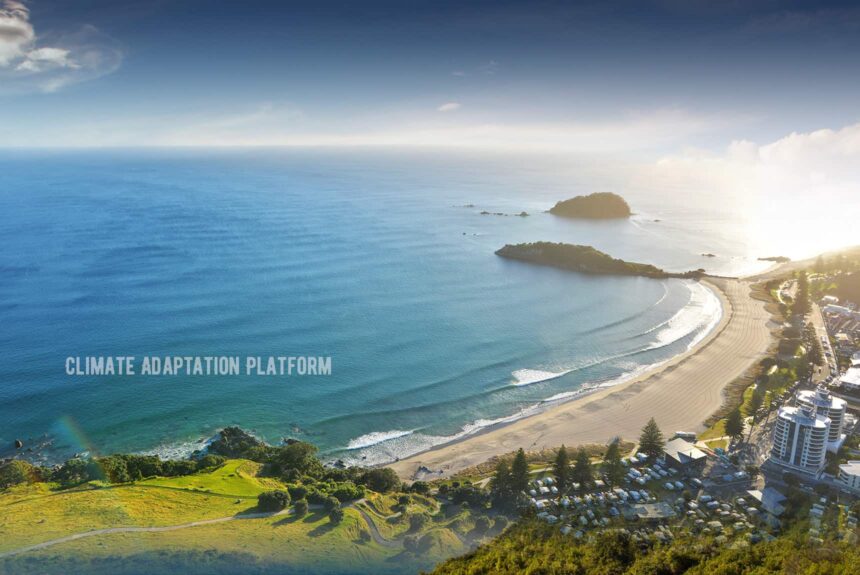In New Zealand, The Aotearoa Climate Adaptation Network (ACAN) held its second annual hui (-a Māori term for a large social gathering) for local government practitioners on 22 and 23 September 2022.
The Taituarā website says, “The event brought together adaptation practitioners from around the country to share successes, identify challenges, and drive the adaptation discussion in Aotearoa New Zealand.”
“The hui was also an opportunity for the Ministry for the environment to gain feedback from those working at the coalface. After receiving feedback on guidance with regard to the National Adaptation Plan (which will become a legal requirement from 30 November 2022), the Ministry for the environment also gave an update on the Climate Adaptation Bill, which is expected to go out for sector feedback early next year.”
“From Christchurch City Council’s risk and vulnerability explorer to Kaipara District Council’s Ruawai Adaptive Pathways, the highlight of the hui was hearing the progress that is being made to prepare our communities for the impacts of climate change. It was great to see how far ACAN and its members have come in the past year.”
The Kaipara District in the Northland Region in northern New Zealand has started consultation with their communities to set up a climate adaptation plan within the next three years in one of its most vulnerable areas, the Ruawai community. Ruawai is facing increasing coastal hazards like sea level rise and flooding.
The structure in formulating the community’s climate adaptation plans features a very high community involvement and consultation. The Kaipara District website shows its project structure diagram.
Representatives from each sector of the community – from the Māori community, business, financing, and agriculture will form the community panel representing the entire Ruawai Flats areas. They will make decisions on climate adaptation on behalf of the community, which will then be passed on t the council as their formal recommendation. The council staff will be available to offer their expertise and technical support to the community panel as they draft their adaptation plans. The council will then help implement these plans.
In New Zealand, councils or their local governments have a role in preparing for and adapting to climate change. This responsibility is mandated by the Resource Management Act 1991 (RMA). The law requires local governments to consider climate change effects on communities and embed it in their existing frameworks, plans, projects and decision-making procedures. As a result, climate change is now incorporated into the council’s water resources, food management, transport, building regulations, and planning.
New Zealand’s Ministry for the Environment (MfE) partnered with Hawke’s Bay Regional Council to see how the local government deals with climate change hazards. The MfE aims to see what national-level changes (legislative and funding) are needed to assist councils and their communities address climate change. The first case study developed by the Ministry and Hawke’s Bay Regional Council investigates the challenges in implementing the Clifton to Tangoio 2120 Coastal Hazard Strategy.
Look at our previous blog post to learn about the Clifton to Tangoio 2120 Coastal Hazard Strategy.
Climate change effects in New Zealand include extreme rain, drought, and wildfire risk. 1 News reports that the country has just experienced its wettest July in recorded history, one of its wettest winters with massive storm systems associated with atmospheric rivers dumping 150% more rainfall than normal across the country. These rainfall events caused widespread flooding and landslides around the country (Macdonald, 2022).
The rising sea levels will make many communities and infrastructure vulnerable to floods, tsunamis, and other natural disasters. The Māori people, their livelihood, important cultural sites, and heritage are considered highly vulnerable due to their close relationship with the environment and resources.
Source:
Aotearoa Climate Adaptation Network annual hui. (2022). Taiturā. Retrieved from https://taituara.org.nz/Story?Action=View&Story_id=452
Ruawai Adaptive Pathways. Kaipara District. Retrieved from https://www.kaipara.govt.nz/adaptive-pathways
Role of councils in preparing for climate change. Ministry for the Environment. Retrieved from https://environment.govt.nz/what-government-is-doing/areas-of-work/climate-change/adapting-to-climate-change/climate-change-adaption-local-government/
Macdonald, B. (2022, September 21). We need a new way to talk about extreme weather. 1 News. Retrieved from https://www.1news.co.nz/2022/09/21/we-need-a-new-way-to-talk-about-extreme-weather/
How climate change affects New Zealand. (2021, September 30). Ministry for the Environment. Retrieved from https://environment.govt.nz/facts-and-science/climate-change/how-climate-change-affects-new-zealand



Leave a Reply